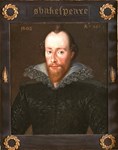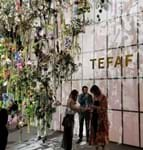
Art Loss Register chairman Julian Radcliffe chaired The Application of Forensic Science and Technology in the Art Trade event.
A group of specialists has put forward proposals for a professional body that would seek to improve the standard of condition reports and verification across the art and antiques sector.
The Association for Analysts in Art and Antiques (AAAA) was discussed on November 14 at a conference organised by Art Loss Register (ALR) at The Apothecaries’ Hall in London.
Prof Andrew Shortland, director of Cranfield Forensic Institute, proposed the creation of a professional body and recommended ways it could be put together. He told the 90-plus delegates that the group would include vetted members who would abide by a series of rules and ethic codes.
Full disclosure
ALR chairman Julian Radcliffe said both ALR and the TEFAF vetting committee supported the idea.
He said scientific and forensic experts need to work together with the art and antiques trade to improve standards in relation to condition reports and verification of art and objects. “The way forward is to move from the scenario of caveat emptor to the insurance way of working with full disclosure,” he added. “If we move to that, we will have a much healthier art trade.”
Radcliffe made a plea for more transparency in the market. “Dealers and auction houses should reveal everything they know. [Lack of information on condition and authenticity] is one of the many reasons some people do not buy or collect. They do not collect as they don’t trust the art trade.”
Quality counts
Speaker Jennifer Mass, president of Scientific Analysis of Fine Art (SAFA) and a vetter at TEFAF New York, warned of the pitfalls of buying a work of art without a full condition report and recommended that a solution is for clients to “rely on a team of experts who have proper credentials in the relevant fields. Accreditation helps.”
She added: “We need to educate the public about what quality science looks like… I would vote for an accreditation system.”
On the topic of attributions, a number of technological advacements were discussed on how artworks could be attributed.
Art dealer, historian and presenter Bendor Grosvenor provided a word of caution, however. His view is that everybody, from the expert, the connoisseur and the AI tool can, and do, make mistakes and that verifying an artwork is never straightforward.
He said: “There are biases wherever we look. I don’t think we should rely on any one thing as we all have weaknesses in the system. Can we establish authenticity? Not always, and not all the time. Sometimes we have to accept that ‘probably by Leonardo’ (when referring to the infamous Salvator Mundi) is the best we can ever do.”













